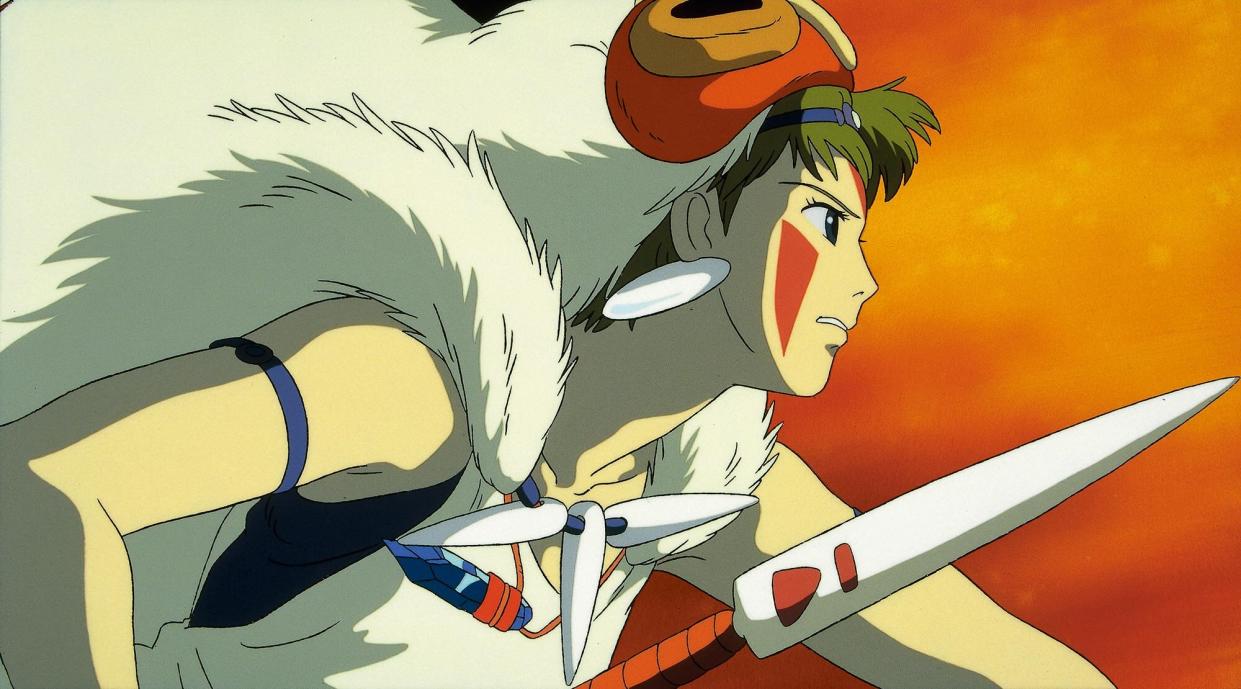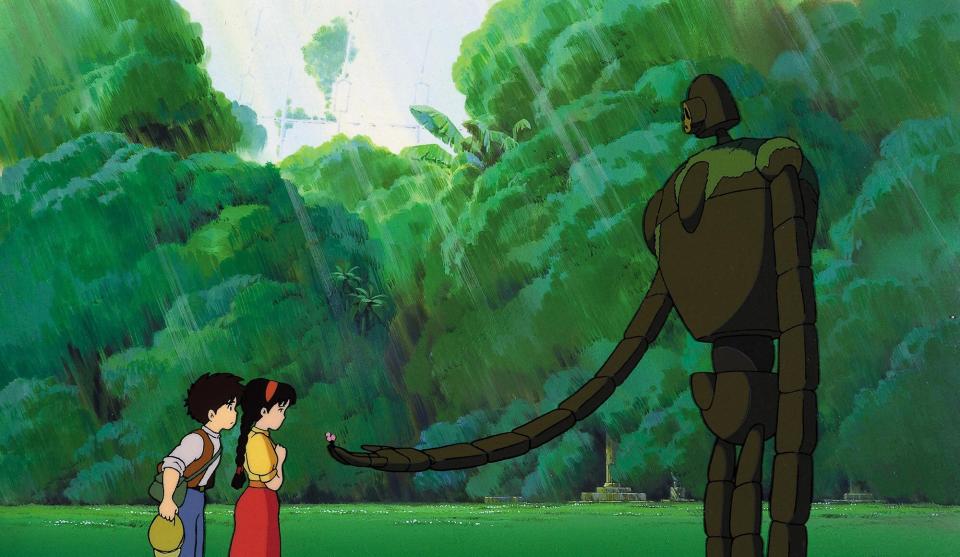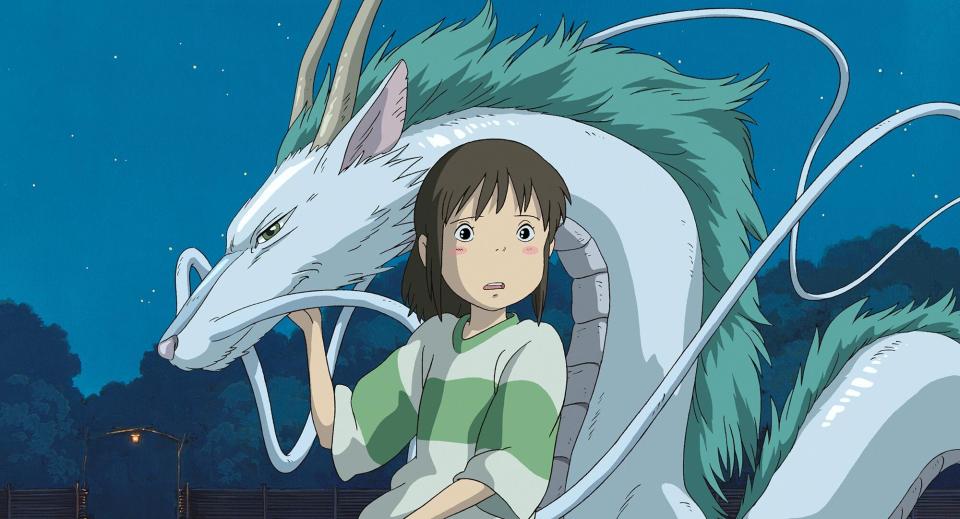Streaming, more Miyazaki, and reminiscence: How Studio Ghibli is adapting for the future

- Oops!Something went wrong.Please try again later.
Studio Ghibli
In the 35-year history of Studio Ghibli, the renown Japanese animation house co-founded by director Hayao Miyazaki, its vast library of classics, from 1986's Castle in the Sky to 2004's Howl's Moving Castle, could only be seen in movie theaters or through physical at-home copies (VHS tapes, DVDs, and Blu-rays). It became an unwavering point for the filmmakers, even as cinema evolved with the digital age and even as different streaming companies vied for ownership of this library.
"I've been working in films for a long time," Toshio Suzuki, another Ghibli co-founder and producer, explains to EW through a translator. "I always believed that films should be seen in movie theaters. We were very hesitant about expanding that even further [beyond] physical packages. What changed my mind was seeing Woody Allen make a film specifically for a streaming platform." In 2016, Allen's Café Society released in theaters through a joint effort by Amazon Studios and Lionsgate before premiering on Amazon Prime Video. In 2017, Wonder Wheel, fully financed by Amazon Studios, debuted. Suzuki remembers reading a line from Allen during an interview at the time, about how streaming would expose films to a broader audience. "I read that quote from him in that interview and that changed my mind."
Since that realization, Studio Ghibli's films became available for the first time as digital releases in December. This year sees this roster of titles hit streaming; Netflix hosts them internationally and HBO Max, which launches this May 27, will be their streaming home in the U.S. The studio's goals for filmmaking remain largely the same, Suzuki says. These decisions were more like adapting to the times, which Ghibli continues to do in order to make the movies that have come to define their works.
Miyazaki, apparently, doesn't know much about the whole streaming craze, but with such a "big, fantastical story" currently in development, larger productions require larger budgets. According to Crunchyroll, Suzuki made mention of this at an event in Japan earlier this year to promote the Studio Ghibli Museum photography book. "Hayao Miyazaki is currently making a movie, but that takes a lot of time. And, of course, money," he said.

Studio Ghibli
That movie — after directing such Ghibli staples as Spirited Away, Princess Mononoke, and the more recent The Wind Rises — is How Do You Live?, based on a 1937 story by Yoshino Genzaburo. Miyazaki announced his retirement in 2013, but the animator who never seems to quit found a new idea for a film. "I actually said that's not a great idea because he's achieved so much already. You can't come back and do something that you've already done in the past, you have to do something different," Suzuki says. "One of the ideas that came out from that was, why not spend more time and spend more money [to make a film]? So, that's one of the new approaches."
That's where streaming comes in. Suzuki confirms the studio received "offers from different streaming platforms these past three or four years" to host their library, considered one of the great white whales in the streaming wars. HBO Max was the last company to make such an offer. As a fan of Clint Eastwood movies, Suzuki was intrigued by the platform's connection to Warner Bros. "Whenever I watch a Clint Eastwood film it says 'Warner Bros,'" he notes of the logo attached to movies like The Good, the Bad and the Ugly, which is distributed in Japan by Warner Bros. Home Video. "So, I've always wanted to work with Warner Bros. for a long time." Ultimately, they left the decision of which streaming home to choose up to GKIDS, the North American distributor of Ghibli's works since 2011. "The person in charge at GKIDS [CEO Eric Beckman] was very excited about this offer from HBO Max, especially them being the last to approach us. They sounded very enthusiastic and we felt that these guys would really appreciate our films and do great work with it."
If Studio Ghibli marks its own Renaissance of animation, Suzuki, a former student of art history, believes they are entering a period of Mannerism. And if the money generated from bringing their past works to streaming helps with that artistic transition, so be it. "There were four stages in the Renaissance: Realism/Archaism, Classical, Mannerism, and then Baroque," he explains. "In fact, all forms of art go through similar stages of evolution, and I believe that Studio Ghibli is now at the point of Mannerism." It's evident in the visual style. My Neighbor Totoro, Ghibli's third movie (if you don't count Nausicaä of the Valley of the Wind, which was developed before the formal founding of Ghibli), was released in 1988 through the work of eight animators, including Miyazaki. "[For] the current film that Hayao Miyazaki is working on, we have 60 animators," Suzuki says, "but we are only able to come up with one minute of animation in a month. That means 12 months a year, you get 12 minutes worth of movie. Actually, we've been working on this film for three years, so that means we have 36 minutes completed so far. We're hoping it will finish in the next three years."

Studio Ghibli
Where the animation industry, especially in Hollywood, favors computer-generated animation, Ghibli's animators continue to hone their hand-drawn craft. Where sequels and remakes remain the trend in entertainment, Ghibli keeps their eye on fresher storytelling. That's not to say some compromises haven't been made. Pom Poko (1994), directed by the studio's third founder Isao Takahata, who died in 2018, was the first Ghibli film to use computer graphics. Takahata's My Neighbors the Yamadas (1999) was Ghibli's first film made entirely with digital effects. Even now, Suzuki confirms Gorō Miyazaki, Miyazaki's son who directed Tales From Earthsea (2006) and From Up on Poppy Hill (2011), is currently making a movie "all done by computer-generated animation." But the hand-drawn craft remains alive as the company continues to evolve.
"What's unique about Ghibli films is they have this atmosphere of reminiscence," Suzuki explains. "When you try to capture that with computer-generated animation, it's going to look new and loses that sense of warmth, reminiscent atmosphere the film should have. I think with hand-drawn animation, it captures that. The animation technique actually connects with what's captured in the story."
According to Suzuki, the future of Ghibli now "really depends" on How Do You Live?, based on the tale of a young boy experiencing a spiritual journey when he goes to live with his uncle after the death of his father. "It's gonna be a long time from now, but we're looking at how people all around the world respond to this new work that he's working on at the moment, and then the further future would all depend on that." Streaming, for one, was something no one saw coming. The word streaming "ban" was used by Suzuki at one point. Now, the producer could see a future where Ghibli considers developing a film exclusively for a streaming platform one day. "However, at this point," he clarifies, "my way of thinking is that I want to make films for theaters." In the wake of the coronavirus and how movie theater can bounce back from closures, that future seems as clouded as ever.
Related content:

